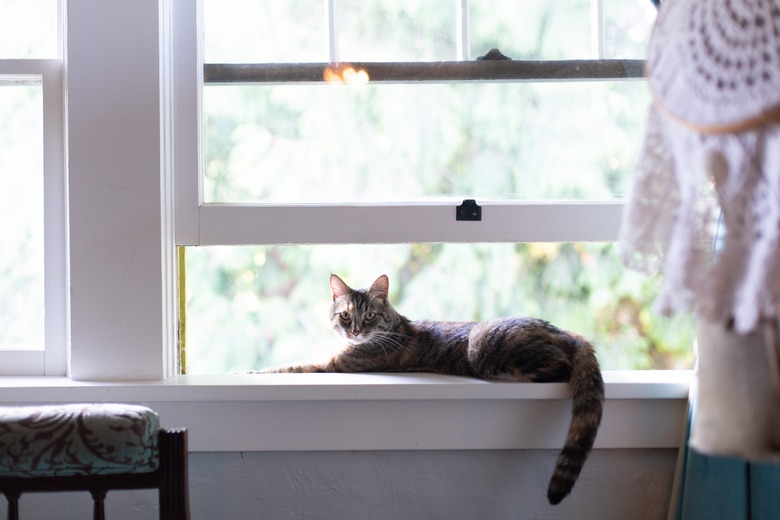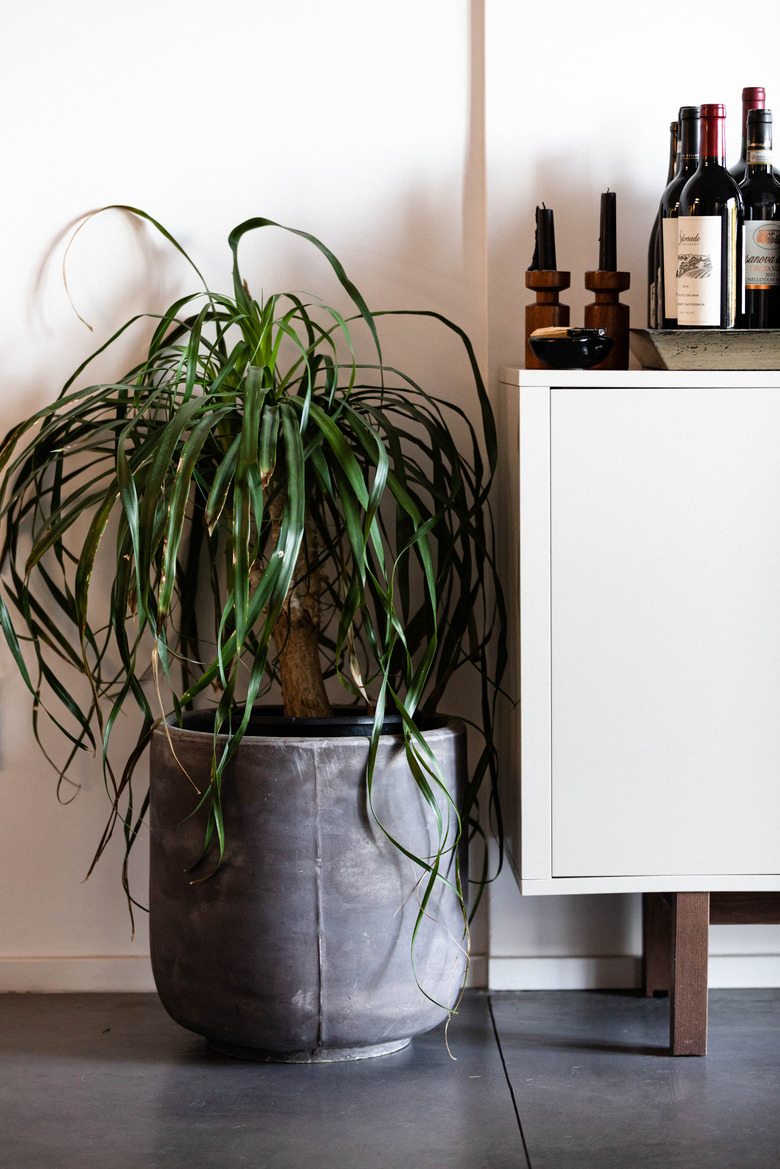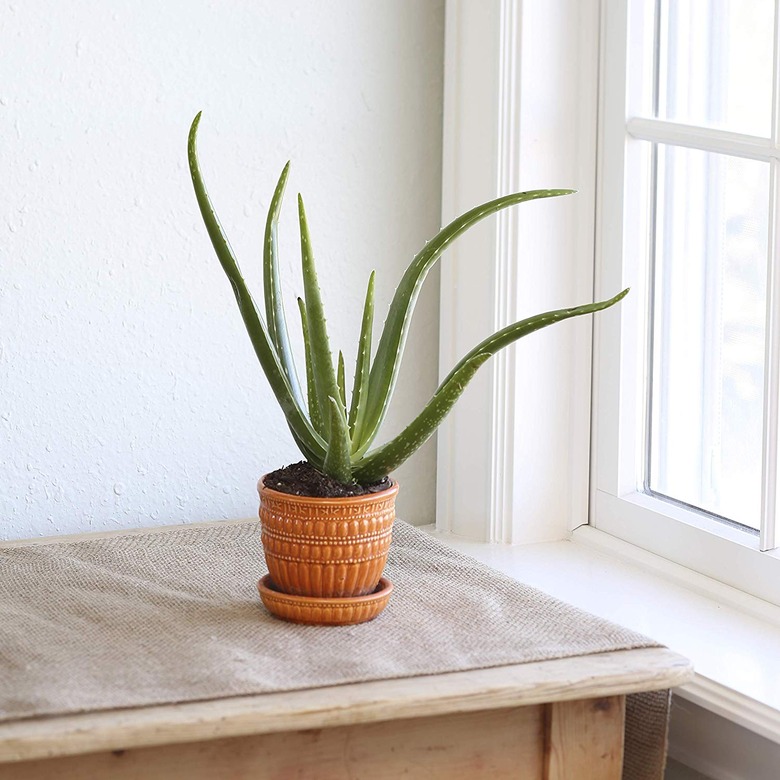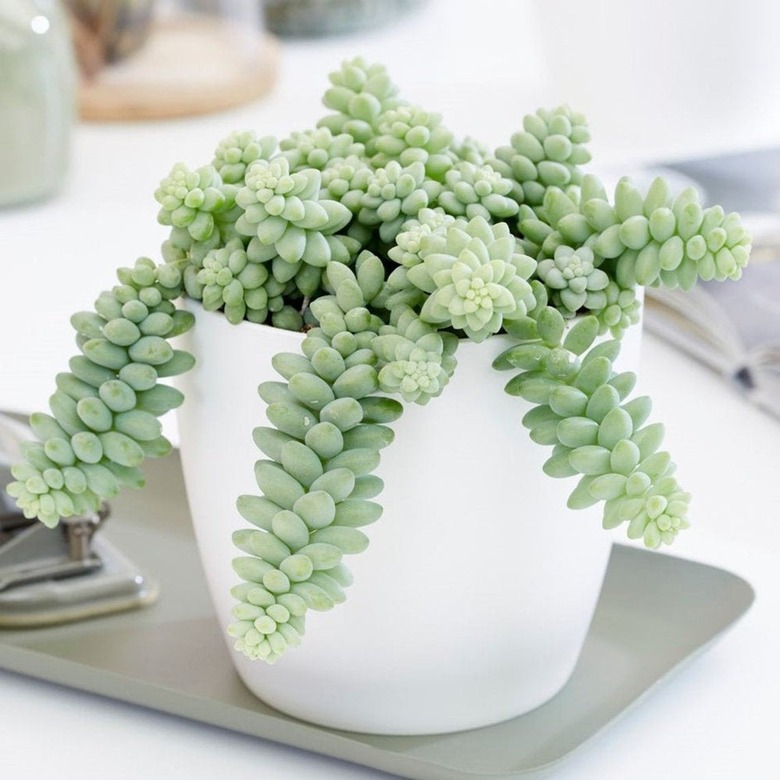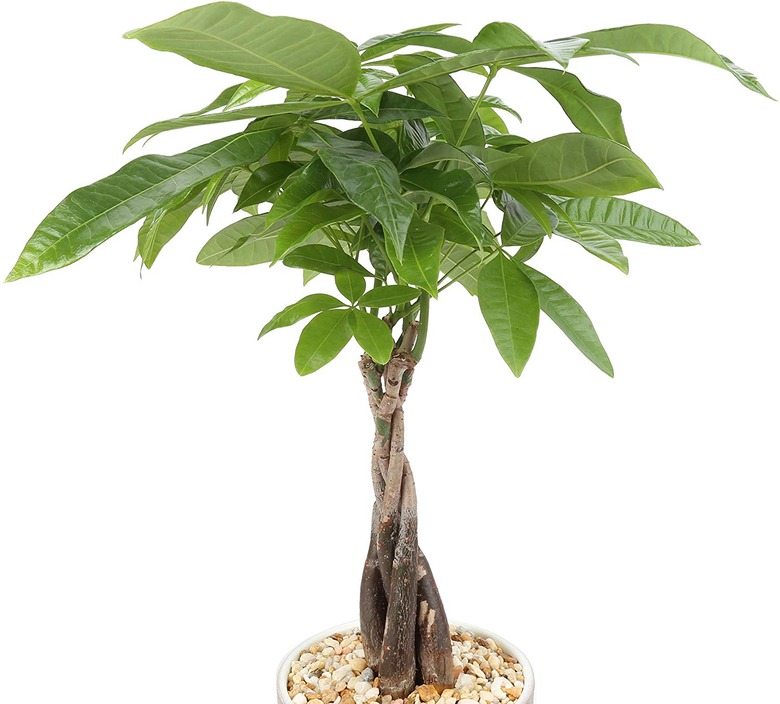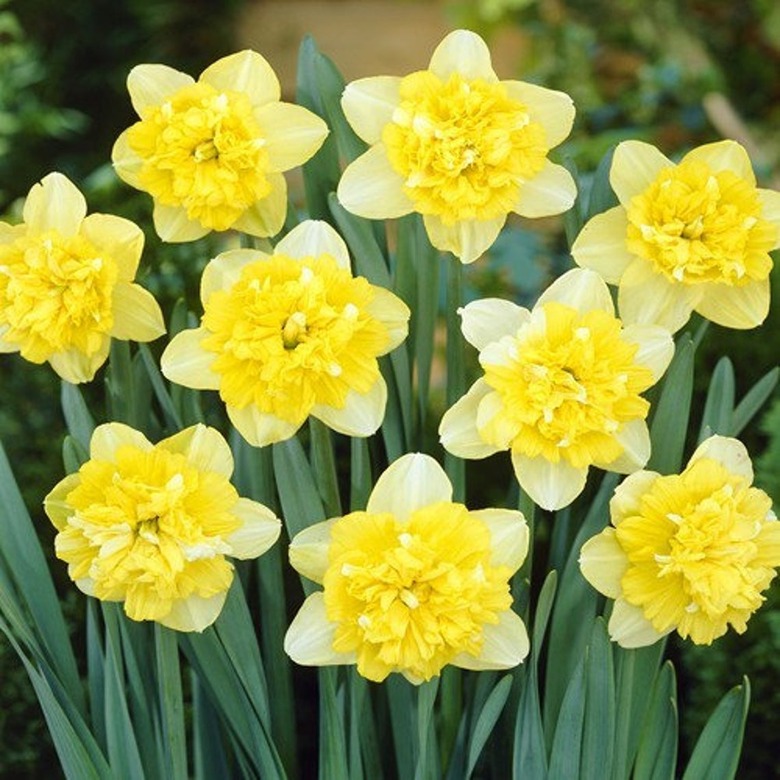Surprisingly, Kitty Litter Is Really Good For These Houseplants
We may receive a commission on purchases made from links.
In this age of multitasking, it won't surprise you to hear that even kitty litter serves more than one purpose. But you may not have expected you could use it to help your houseplants.
Kitty litter can provide an element some houseplants really, really need to thrive by assisting with drainage. Houseplants including succulents and bulb plants will die if they sit for too long in water-soaked soil. Keep in mind that well-draining soil doesn't just let excess water pass through. In order to be effective, the soil has to create air spaces that give the plant roots oxygen.
The right kitty litter retains water enough to prevent the plant from drying out but also provides the requisite aeration and drainage. Mixing kitty litter with potting soil and horticultural grit makes these plants green and happy. Want to know which plants, or how to use it? Read on for the scoop.
Sweetheart Hoya
Sweetheart Hoya
One of our favorite succulents (or pseudo-succulents) right now is sweetheart hoya (Hoya kerrii). These plants look and act like succulents, with palm-size leaves in perfect heart shapes. Most are sold as one leaf in a container, but in time it will grow into a vine filled with these waxy Valentine leaves. And if you are lucky, your plant will grow starry-shaped flowers that look like sugar icing.
Tips for using kitty litter: When you are shopping for clay-based kitty litter, pick a low dust variety with a mineral base like Kleensorb diatomite. Dusty cat litter can be extremely messy.
Plant care: Like a succulent, sweetheart hoya needs well-draining soil and minimal water, but how about sun? Bright indirect light is the ticket. Allow that soil to dry out well between drinks, but utterly dry soil may take a negative toll on the plant.
Ponytail Palm Tree
Ponytail Palm Tree
We're not going to lie, the ponytail palm tree (Beaucarnea recurvata) is not a palm nor a tree. It only gets to four feet tall as a houseplant, but it looks like a tree with its thick "trunk" tapering off on top, and ribbony leaves growing to three feet long from the "canopy." Unique and fascinating, they are related to Joshua trees. They are easy care and drought tolerant.
Tips for using kitty litter: Don't just buy any kitty litter to use in creating soil. Today, you can find kitty litter made of any a number of products, some of which are not appropriate for soil. Use only kitty litter made from calcined clay, a substance made from clay fired in a furnace. This helps the clay to remain absorbent but makes it slow to break down.
Plant care: You overwater these plants at your peril and theirs, since keeping their soil wet is the quickest way to kill them. They need fast-draining soil and a pot with multiple drain holes. Sit in bright indirect sun and only water when the top two inches of soil are completely dry. Water even less in winter.
Aloe Vera
Aloe Vera
Aloe (Aloe vera) is an attractive trunkless succulent that doubles as a medicinal plant. The gel in those puffy leaves take the sting out of burns. The thick, fleshy leaves fan out from the plant's center, each with toothed leaf margins. Aloe vera is known for its drought resistance, and gardeners swear that it thrives on neglect. It will not tolerate standing water or wet soil, however.
Tips for using kitty litter: For plants that don't need many nutrients and really hate wet feet like aloe, change the soil mix to 1 part kitty litter/1 part loam-based potting soil/1 part horticultural grit. It's the kitty litter that holds moisture enough to keep the roots happy, but if the roots want less, use less.
Plant care: Forget location, location, location. That's real estate, not aloe vera. The watchwords for this plant are: drainage, drainage, drainage. Aloes need water to leave the soil very quickly. When you do water — only when that soil is very dry — keep watering until the excess starts running out of the holes in the bottom of the plant. Give aloe a site with bright, indirect sunlight.
Donkey's Tail Succulents
Donkey's Tail Succulents
Donkey's tail (Sedum morganianum) may have a wacky common name but that hasn't stopped it from becoming one of the most popular trailing succulents. Its small fleshy leaves grow in tight, narrow rows, rather like a horse or donkey's tail. The rows of droplet-shaped leaves trail out of the container, perfect for hanging baskets.
Tips for using kitty litter: A good soil mix for succulents is two parts kitty litter to one part loam-based potting soil and one part horticultural grit.
Plant care: Well-draining soil is a must, since donkey's tail rots in wet soil. Place in a sunny window and water when the soil feels quite dry. The plants do best in a room at about 65 degrees Fahrenheit.
Money Tree
Money Tree
Our selection for best houseplant to buy in January was the money tree (Pachira aquatica), reputed to bring you good fortune and also luck, if placed in the correct (feng shui) area of the home. Each plant has a slender stem with bright green leaves, and the idea is to braid three or more stems together to form a trunk. You can buy the money tree already braided or treat it as a DIY project. Either way, it ends up making quite a statement as a houseplant.
Tips for using kitty litter: Try using Special Kitty Natural Clay Cat Litter, the unscented variety. It's non-clumping and available at Walmart.
Plant care: No direct sunlight please! The money tree plant likes bright indirect light but it can survive in low-light situations. It prefers watering when the top inch of the soil is dry, but it can go a lot longer without water. It requires good drainage, which means you need well-draining soil and containers with drainage holes.
Topolino Daffodil
Topolino Daffodil
Bulb plants — like hyacinths, daffodils, and lilies — are the joy of the spring garden, but they can also be wonderful spring houseplants. Buy them in a garden store and pot them up at home, then watch them develop stems, leaves, and flowers in the same profusion of color and delight that they provide in the yard. Daffodil bulbs (Narcissus spp.) are the most popular bulb plants in this country and there are lots of varieties and cultivars to choose from. It's best to go with a dwarf, like creamy Topolino, which only grows to 10 inches high and has a miniature bicolor with pointed pure white petals and a clear lemon yellow trumpet.
Tips for using kitty litter: Kitty litter is a great bulb plant soil since it provides the conditions the plants need to thrive: well-draining soil that allows excess water to exit, but holds enough to keep the bulb from drying out, and sufficient air pockets for oxygen. Use lightweight non-clumping litter.
Plant care: Sink the bulbs a couple of inches below the top of the soil, pointy end up. Select well-draining soil and a sunny site that get at least three or more hours a day of sunlight. When the blooms fade, transplant the bulbs into the yard to regenerate for next year.
References
- YouTube: Best Soil Mix for Succulents/Cactus
- UBS Botanial Garden: Cat Litter as Bonasi or Potting Soil
- BonsaiNut: Cat Litter as Soil
- Balcony Garden Web: Make Your Own Potting Soil Mix
- Pacific Bulb Society: Growing Medium
- Pacific Bulb Society: Potting Mixes and Drainage
- Nature Bring: Growing Daffodils Indoors
- Bloms Bulbs: Dwarf Daffodil Topolino
- Pistils Nursery: Hoya Kerrii
- Old Farmer's Almanac: Ponytail Palms
- Old Farmer's Almanac: Aloe Vera
- Eastern Leaf: What Is a Money Tree Plant?
- Greenliving Ideas: How Cat Litter Is Made
